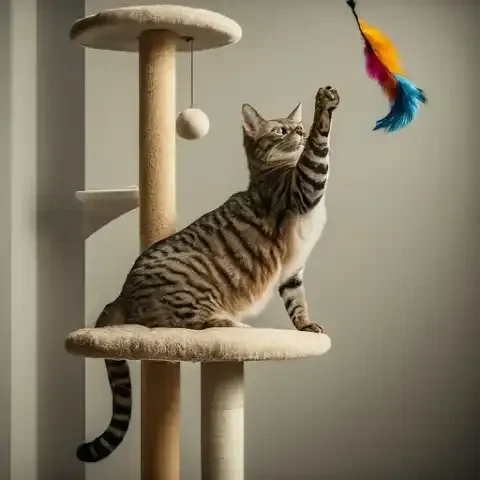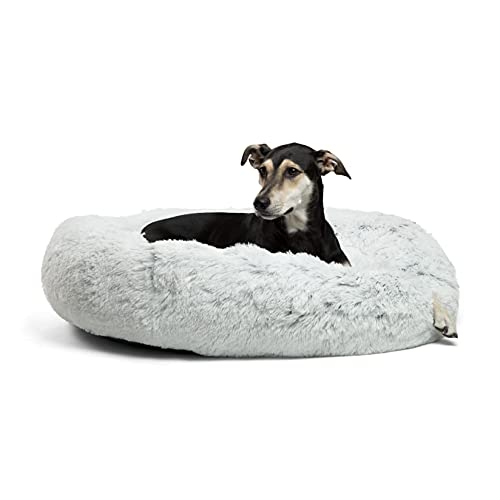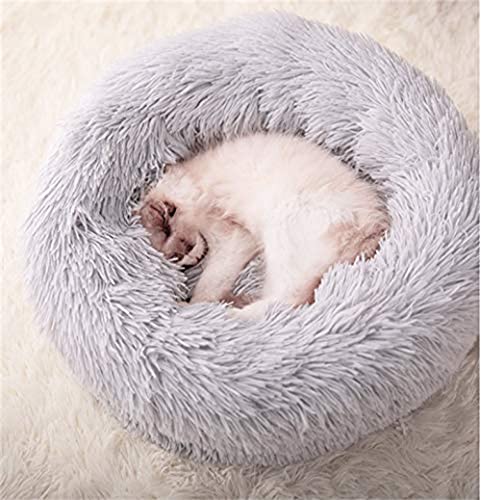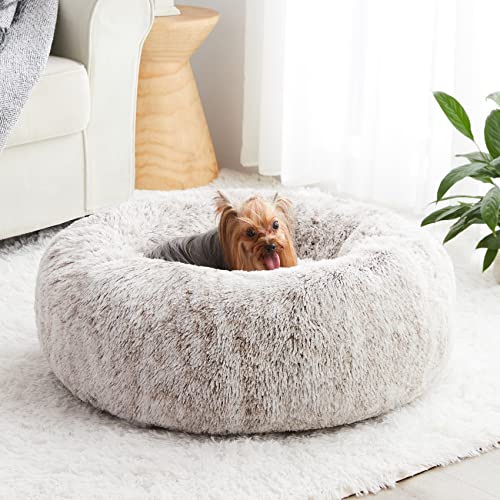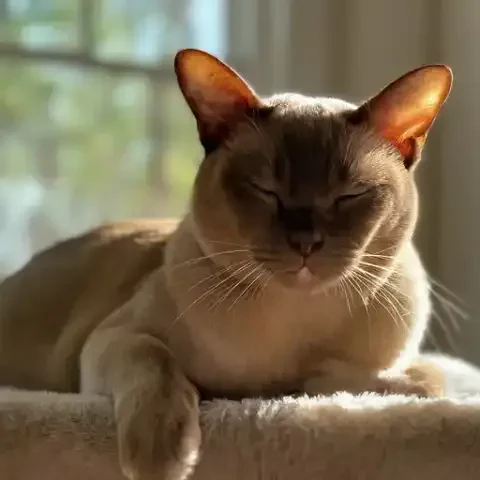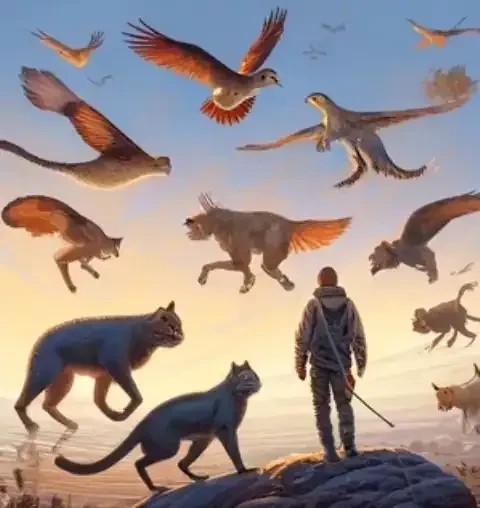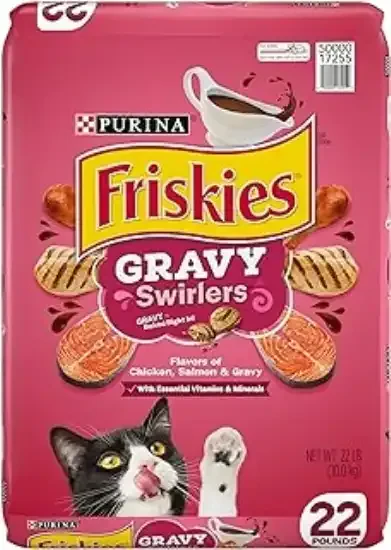Forget the stereotype of the lazy, aloof feline, uninterested in anything beyond sunbeams and naps. Look closer, and you'll discover a hidden wellspring of ingenuity within your purring companion. Your cat, far from being a creature of pure instinct, is a budding Picasso in fur, a miniature Einstein with whiskers. Perhaps you’ve chuckled at your cat’s uncanny ability to open cabinet doors, marveled at their acrobatic leaps to seemingly impossible heights, or been baffled by the complex games they invent with the most mundane objects. These aren’t just random feline quirks; they are glimpses into your cat’s creative side, expressions of a natural inventiveness that often goes unrecognized and untapped.
The word “creativity” often conjures images of artists with paintbrushes, musicians composing symphonies, or writers crafting novels. We tend to apply a very human-centric lens to the concept, associating it with deliberate artistic expression. However, when we confine creativity to these narrow parameters, we risk overlooking the diverse and equally valid forms it takes in the animal kingdom. For cats, creativity isn't about producing artwork for a gallery or composing a concerto. It's deeply intertwined with their natural instincts, their survival strategies, their problem-solving prowess, and their unique way of engaging with the world around them.
This article aims to shift your perspective and illuminate the often-underestimated creative spirit of your feline friend. We will delve into what "cat creativity" truly means, moving beyond human definitions and focusing on the innate ingenuity inherent in feline behavior. We will explore how to recognize the subtle signs that reveal your cat's creative potential, and most importantly, provide you with practical, actionable tips to nurture and encourage this creativity. By understanding and fostering your cat’s natural inventiveness, you can not only enrich their lives, but also deepen your bond and unlock a more playful, engaging, and fulfilling companionship for both of you. Prepare to be amazed by the inventive soul that lives purring in your home – it’s time to unleash your cat's creative side.
To truly understand and appreciate your cat’s creative side, we must first redefine what creativity means in a feline context. We need to step away from human-centric notions of art and music and look at creativity through the eyes, or rather, the whiskers, of a cat. The essence of cat creativity isn't about mimicking human artistic endeavors, but about skillfully navigating their world, solving problems that arise, and engaging with their environment in novel and adaptable ways.
At its core, feline creativity is deeply rooted in instinctual drives. Consider the act of hunting. While it’s an instinct, the way a cat hunts – the patient stalking, the strategic positioning, the sudden burst of pounce – is inherently creative. Each hunt is a unique scenario, requiring adaptation and innovation. The environment changes, the prey behaves unpredictably, and the cat must adjust its approach, using cunning and ingenuity to succeed. This isn't just programmed behavior; it's a dynamic interaction that relies on problem-solving and adaptability, hallmarks of creativity.
Exploration, another fundamental feline drive, is also inherently creative. Cats are naturally curious creatures, constantly investigating their surroundings. They don't simply exist in their environment; they actively engage with it, exploring every nook and cranny, every new scent, every change in their territory. This exploration is not random; it's driven by an innate desire to understand their world, to map it out, to identify resources and potential dangers. This drive to explore and learn fosters adaptability and encourages them to find novel solutions to navigate their surroundings. Think of a cat meticulously investigating a new cardboard box, turning it into a fortress, a hunting blind, or simply a cozy retreat. This isn't just instinct; it's an imaginative repurposing of an object, a creative interaction with their environment.
Play, perhaps the most readily observable aspect of feline behavior, is a powerful manifestation of cat creativity. Kittens, in particular, engage in elaborate play sessions, transforming everyday objects into prey, adversaries, or simply sources of amusement. A humble dust bunny becomes a thrilling hunt, a dangling string morphs into a captivating snake, and a discarded bottle cap becomes a prized trophy. This imaginative play isn't just for kittens; adult cats retain their playful spirit and continue to find creative ways to engage with toys, objects, and even their human companions. Observe how your cat plays with a new toy. Do they simply bat it around, or do they stalk it, pounce on it from hidden locations, invent complex scenarios around it? These are all signs of imaginative play, a clear demonstration of their creative spirit.
Beyond instinct and play, cats exhibit remarkable adaptability and innovation when faced with challenges. Think of a cat determined to reach a high shelf, a forbidden counter, or a treat hidden away. They don’t simply give up; they strategize, assess the environment, and find novel solutions. They might use furniture as stepping stones, climb curtains, or even learn to open drawers and cabinets. This isn't just about being persistent; it's about finding creative workarounds, adapting to obstacles, and innovating new approaches to achieve their goals. Consider the countless anecdotes of cats opening doors, turning on faucets, or even manipulating household objects to their advantage. These actions demonstrate a problem-solving ability that goes beyond simple learning; it’s a form of practical creativity, applied to navigate their domestic world.
Therefore, “unleashing creativity” in cats isn’t about teaching them to paint or sculpt. It’s about recognizing, encouraging, and channeling these natural feline behaviors in positive and enriching ways. It’s about providing them with environments and opportunities that stimulate their innate curiosity, problem-solving skills, and playful spirit. It’s about understanding that their creativity is already there, waiting to be recognized and nurtured, expressed through their unique feline lens.
Now that we understand what feline creativity truly entails, the next step is learning to recognize the subtle signs that reveal your cat's inherent inventiveness. Many cat owners, accustomed to the stereotype of the aloof cat, may inadvertently overlook these clues, dismissing them as mere feline quirks or random behaviors. However, with a more discerning eye and a deeper understanding of feline communication, you can begin to appreciate the creative genius already residing in your furry companion.
Observational clues are key to unlocking this understanding. Start by paying close attention to your cat’s play. Is their play merely repetitive and predictable, or does it showcase inventiveness? A truly creative cat will use objects in unexpected ways, transforming a simple toy into a complex scenario. They might create games out of everyday items, like chasing shadows, batting at dangling cords, or inventing elaborate obstacle courses around the furniture. Observe if they are constantly finding new ways to interact with their toys, instead of simply going through the motions. Do they stalk their toys from hidden locations, pounce with dramatic flair, or use vocalizations to enhance their play narratives? These are all indicators of imaginative play, a clear manifestation of their creative spirit.
Next, observe your cat’s problem-solving skills. Does your cat give up easily when faced with a challenge, or do they persist, strategize, and find innovative solutions? A creative cat will demonstrate remarkable ingenuity when trying to access something they desire. Watch them as they try to figure out puzzle feeders, open doors or cabinets, or reach hidden objects. Do they methodically assess the situation, try different approaches, and adapt their strategy if the initial attempt fails? A cat who persistently tries different methods to open a cabinet door, experimenting with different angles and techniques, is demonstrating problem-solving creativity in action. Consider anecdotes of cats learning to flush toilets, turn on lights, or even manipulate door handles. These aren't simply learned behaviors; they are examples of cats creatively applying their cognitive abilities to solve practical problems in their environment.
Environmental exploration is another critical area to observe. Is your cat content to stay in the same familiar spots, or are they constantly seeking out new spaces and investigating their surroundings? A creative cat is inherently curious about their environment. They will be drawn to new spaces, persistently investigate changes in their territory, and find hidden nooks and crannies to explore. Watch how they react to new objects or changes in their home. Do they cautiously approach and sniff, or do they enthusiastically investigate every aspect, climbing on top, peering inside, and thoroughly examining the new addition? A cat who meticulously explores a new cardboard box, checking every corner, testing its stability, and finding multiple entrances and exits, is demonstrating their innate curiosity and exploratory drive, a key component of feline creativity.
Unique communication styles can also hint at a cat’s creative personality. Cats communicate through a complex tapestry of vocalizations, body language, and gestures. While some vocalizations are instinctive, creative cats often develop unique and individualized communication methods. Pay attention to their meows, purrs, chirps, and hisses. Do they vary their vocalizations to express different needs and intentions? Do they use specific meows to get your attention for food, play, or affection? Similarly, observe their body language. Do they use subtle gestures, tail movements, or ear positions to convey specific messages? A cat who develops a unique repertoire of vocalizations and body language to communicate with their human companions is demonstrating a form of creative expression, using their communication skills in individualized and nuanced ways.
Finally, look for those “thinking outside the box” moments – the anecdotes of cats displaying surprisingly clever or resourceful behaviors that defy simple explanations. Perhaps your cat figured out how to operate a lever to get treats, used a tool to retrieve a toy from under the furniture, or invented a game that involves you in a complex chase sequence. These moments, while sometimes anecdotal, offer valuable insights into the surprising creativity of cats. Collect these "thinking outside the box" moments in your own observations of your cat. Keep a mental or even a written note of those times when your cat surprised you with their cleverness, resourcefulness, or unexpected solutions to problems. These anecdotes, when considered collectively, build a compelling case for the remarkable creative potential hidden within our feline companions.
By learning to recognize these observational clues – inventive play, problem-solving skills, environmental exploration, unique communication, and “thinking outside the box” moments – you can begin to see your cat in a new light. You might just realize that you are already living with a creative genius, patiently waiting for you to appreciate their unique feline brilliance.
Once you’ve recognized the signs of your cat’s creative potential, the most rewarding step is to actively nurture and unleash it. Creating an environment that stimulates their natural curiosity, problem-solving skills, and playful spirit is not only beneficial for their mental and physical well-being, but also deepens your bond and enriches your shared life. Think of your home as a potential creative playground for your feline companion, a space ripe with opportunities for exploration, stimulation, and imaginative play.
Environmental enrichment is the cornerstone of unleashing your cat’s creative side. The key is to transform your home into a stimulating and engaging space that caters to their natural feline instincts. Vertical space is paramount. Cats are natural climbers and observers, genetically programmed to seek out high vantage points. Cat trees, shelves, window perches, and even strategically placed furniture create a multi-level environment that satisfies their need for vertical exploration. These elevated spaces provide a sense of security, allow them to survey their territory, and offer a different perspective on their surroundings, all of which stimulate their mental engagement. Imagine your cat perched atop a cat tree, observing the world from a new height, planning their next playful pounce, or simply enjoying the elevated view. This vertical dimension adds a crucial layer of complexity and stimulation to their environment.
Sensory stimulation is equally important. Cats are highly attuned to their senses, and providing a rich sensory environment is vital for their mental enrichment. Scratching posts of different textures – sisal, carpet, cardboard – not only satisfy their scratching instincts but also offer tactile variety. Catnip toys engage their sense of smell and trigger playful behaviors. Window feeders, placed outside windows, attract birds and other wildlife, providing captivating visual stimulation and tapping into their hunting instincts (even if just vicariously). Safe outdoor access, such as a catio or leash walks, offers a wealth of new sights, sounds, and smells, further enriching their sensory world. Think of the delight a cat experiences from the scent of catnip, the tactile sensation of scratching on different surfaces, or the visual spectacle of birds flitting outside the window. These sensory experiences are crucial for keeping their minds sharp and engaged.
Hiding spots and novelty are also essential components of an enriching environment. Cats are naturally drawn to enclosed spaces, providing a sense of security and retreat. Boxes, tunnels, paper bags, and even strategically draped blankets offer opportunities for exploration, surprise, and imaginative play. Regularly rotate toys and environmental elements to maintain novelty and prevent boredom. Introduce new boxes, rearrange furniture (within reason!), and swap out toys to keep their environment fresh and stimulating. Imagine the joy your cat experiences from discovering a new cardboard box, transforming it into a secret hideaway, a hunting blind, or simply a cozy nap spot. This element of novelty and surprise keeps their environment interesting and encourages ongoing exploration and creative interaction.
Interactive play is the second crucial pillar in unleashing your cat's creative potential. Play is not just exercise for cats; it’s a vital outlet for their hunting instincts, a platform for imaginative expression, and a key component of their mental stimulation. A variety of toys is essential to spark their imagination and cater to their diverse play preferences. Feather wands, fishing rod toys, puzzle feeders, and crinkle balls offer diverse textures, movements, and challenges, keeping play sessions engaging and stimulating. Offer a mix of toys that mimic different types of prey and encourage various play styles – chasing, stalking, pouncing, batting.
Mimic hunting sequences during play to tap into their natural instincts. Engage in play that replicates the stages of a hunt – stalking, chasing, pouncing, and “catching” the toy. Let them “capture” their prey at the end of the play session, allowing them to experience the satisfaction of a successful hunt. This type of play is not only physically engaging but also mentally stimulating, allowing them to fully express their predatory instincts in a safe and controlled environment. Imagine your cat stalking a feather wand, creeping low to the ground, then bursting into a pounce with focused intensity. This hunting sequence play taps into their deep-seated instincts and provides a satisfying outlet for their natural predatory drive.
Puzzle toys and food puzzles are excellent tools for challenging their problem-solving skills and making feeding time more engaging. These toys require cats to work for their food, stimulating their minds and slowing down their eating. Start with simple puzzles and gradually increase the difficulty as they become more proficient. Food puzzles transform mealtime from a passive activity into an engaging mental challenge, encouraging them to use their problem-solving abilities to access their food. Imagine your cat intently working on a puzzle feeder, using their paws and nose to manipulate the mechanisms and retrieve the treats inside. This type of mental workout is just as important as physical exercise for maintaining their cognitive health.
Training and clicker training, often associated with dogs, can also be a surprisingly effective way to engage a cat’s creative mind. Teaching cats tricks and commands is not only mentally stimulating but also strengthens the cat-owner bond in a creative and interactive way. Start with simple commands like “sit” or “come” and gradually progress to more complex tricks like “fetch” or “high-five.” Clicker training, using positive reinforcement, can be particularly effective for teaching cats new behaviors. Imagine the sense of accomplishment your cat experiences when they successfully learn a new trick, the mental stimulation of mastering a new skill, and the strengthened bond you build through positive training sessions. Training, often overlooked for cats, is a powerful tool for engaging their minds and unleashing their creative potential in a structured and interactive way.
Beyond environmental enrichment and interactive play, consider “cat-scaping” and DIY projects to further personalize your cat’s creative playground. Simple DIY projects like building cardboard castles, constructing window perches, or creating interactive feeders can be both fun for you and enriching for your cat. Repurposing household items into safe and engaging toys is another creative outlet. Sock mice, toilet paper roll puzzles, and even crinkle toys made from recycled materials offer sustainable and budget-friendly ways to provide novelty and stimulation. Engage with natural elements safely by bringing pet-safe plants indoors or creating a window box garden specifically for cat viewing. These natural elements add sensory richness and connect your indoor cat to the outside world in a safe and stimulating way. Imagine the satisfaction of creating a cardboard castle for your cat, watching them explore its various levels and secret chambers, or the joy of seeing them watch birds fluttering around a window box garden you designed specifically for their entertainment. These DIY projects not only provide enrichment for your cat but also offer a creative outlet for you as a cat owner, further strengthening your bond through shared creative endeavors.
Nurturing your cat’s creative side is not merely about providing entertainment; it yields a multitude of benefits that enhance both their lives and your relationship. One of the most significant advantages is reduced boredom and destructive behavior. Cats who have their creative needs met are less likely to become bored and resort to destructive behaviors like scratching furniture, excessive meowing, or aggressive play. By channeling their energy into positive outlets – play, exploration, problem-solving – you provide them with healthy and constructive ways to express their natural instincts and prevent behavioral issues stemming from boredom and frustration.
Enhanced mental stimulation is another crucial benefit. Just like humans, cats need mental exercise to maintain cognitive health and prevent mental decline. Engaging their creative side through play, puzzles, and environmental enrichment keeps their minds sharp, improves their problem-solving abilities, and contributes to their overall cognitive well-being. A mentally stimulated cat is a happier, healthier, and more engaged cat, less prone to age-related cognitive decline and more likely to remain playful and curious throughout their lives.
Strengthening the cat-owner bond is a deeply rewarding outcome of nurturing your cat’s creativity. Interactive play, training sessions, and shared creative projects foster connection, communication, and mutual enjoyment. These shared activities create positive associations, build trust, and deepen the emotional bond between you and your feline companion. The time you spend engaging with your cat’s creative side is not just playtime; it’s quality bonding time that strengthens your relationship and enriches your shared life.
Nurturing your cat’s creativity also leads to a deeper understanding of their individual personality. Observing their creative expressions – their unique play styles, problem-solving approaches, and communication methods – reveals more about their individual nature, preferences, and quirks. You’ll gain insights into their likes and dislikes, their strengths and weaknesses, and their unique way of interacting with the world. This deeper understanding allows you to tailor your interactions, enrichment strategies, and care to their individual needs and preferences, further strengthening your bond and providing them with a more personalized and fulfilling life.
Ultimately, nurturing your cat’s creative side creates a more fun and engaging home environment for both of you. A creatively stimulated cat is a more playful, interactive, and entertaining companion. Their inventive antics, playful explorations, and problem-solving endeavors add a layer of amusement and fascination to your daily life. A home enriched for a cat’s creativity is a home filled with more laughter, engagement, and mutual enjoyment, a truly rewarding environment for both feline and human inhabitants.
As you embark on this journey of unleashing your cat’s creative side, it’s crucial to prioritize safety and always keep your cat’s well-being in mind. Use pet-safe materials for all DIY projects and toy creation. Avoid toxic plants in your cat-scaping efforts and ensure that any outdoor access, like catios, is secure and supervised. When building structures like cat trees or window perches, ensure they are stable and sturdy to prevent accidents.
Respect individual cat personalities and preferences. Some cats are naturally more outwardly “creative” than others. Focus on understanding and enriching your cat’s unique needs and preferences, rather than comparing them to some idealized notion of a “creative cat.” Observe their responses to different types of enrichment, toys, and activities, and tailor your approach accordingly. What excites one cat might bore another. The key is to discover what sparks your cat's individual creative flame.
Observe and adapt your enrichment strategies based on your cat’s responses. Pay close attention to their behavior during play sessions, exploration activities, and interactions with new environmental elements. If they seem bored or uninterested, adjust your approach. Try different toys, vary play styles, and introduce new challenges to keep them engaged. Creativity is not a one-size-fits-all approach; it’s an ongoing process of observation, adaptation, and tailoring your strategies to your cat’s evolving needs and preferences.
Finally, and most importantly, avoid forcing creativity. Encourage and offer opportunities for creative expression, but never pressure your cat to participate if they are not interested. Creativity should be a fun and voluntary expression, not a forced activity. Offer a stimulating environment, provide engaging toys, and initiate interactive play, but ultimately, let your cat lead the way and express their creativity in their own time and in their own way. Respect their boundaries, honor their preferences, and allow their creative spirit to unfold naturally and spontaneously.
Every cat, regardless of breed, age, or personality, possesses a unique creative side, waiting to be recognized and nurtured. As a cat owner, you hold the key to unlocking this potential, transforming your home into a creative playground and your relationship into a more enriching and engaging partnership. By shifting your perspective, understanding feline creativity on its own terms, and implementing practical enrichment strategies, you can embark on a rewarding journey to discover and nurture your cat’s individual creative genius.
So, take a closer look at your feline companion. Observe their play, their problem-solving, their explorations, and their unique expressions. Try out the suggested tips, experiment with different enrichment techniques, and embark on this exciting journey of discovery together. Unleashing your cat’s creative side isn’t just about enriching their lives; it’s about deepening your bond, fostering a more playful and engaging companionship, and discovering the amazing, inventive soul that lives purring in your home. Embrace the adventure, celebrate their feline ingenuity, and witness firsthand the joy of unleashing your cat’s creative spirit.
